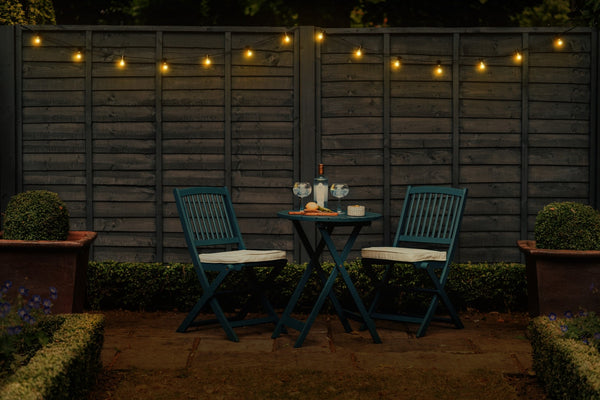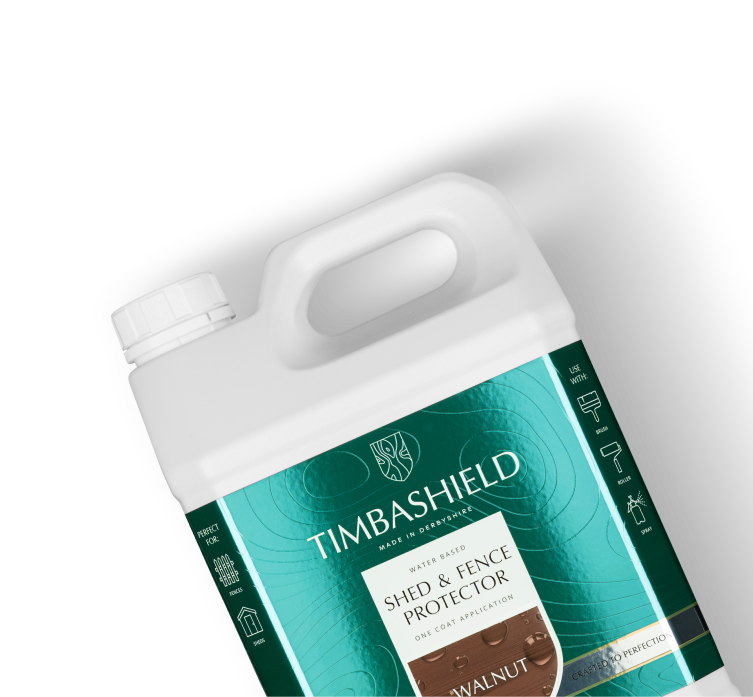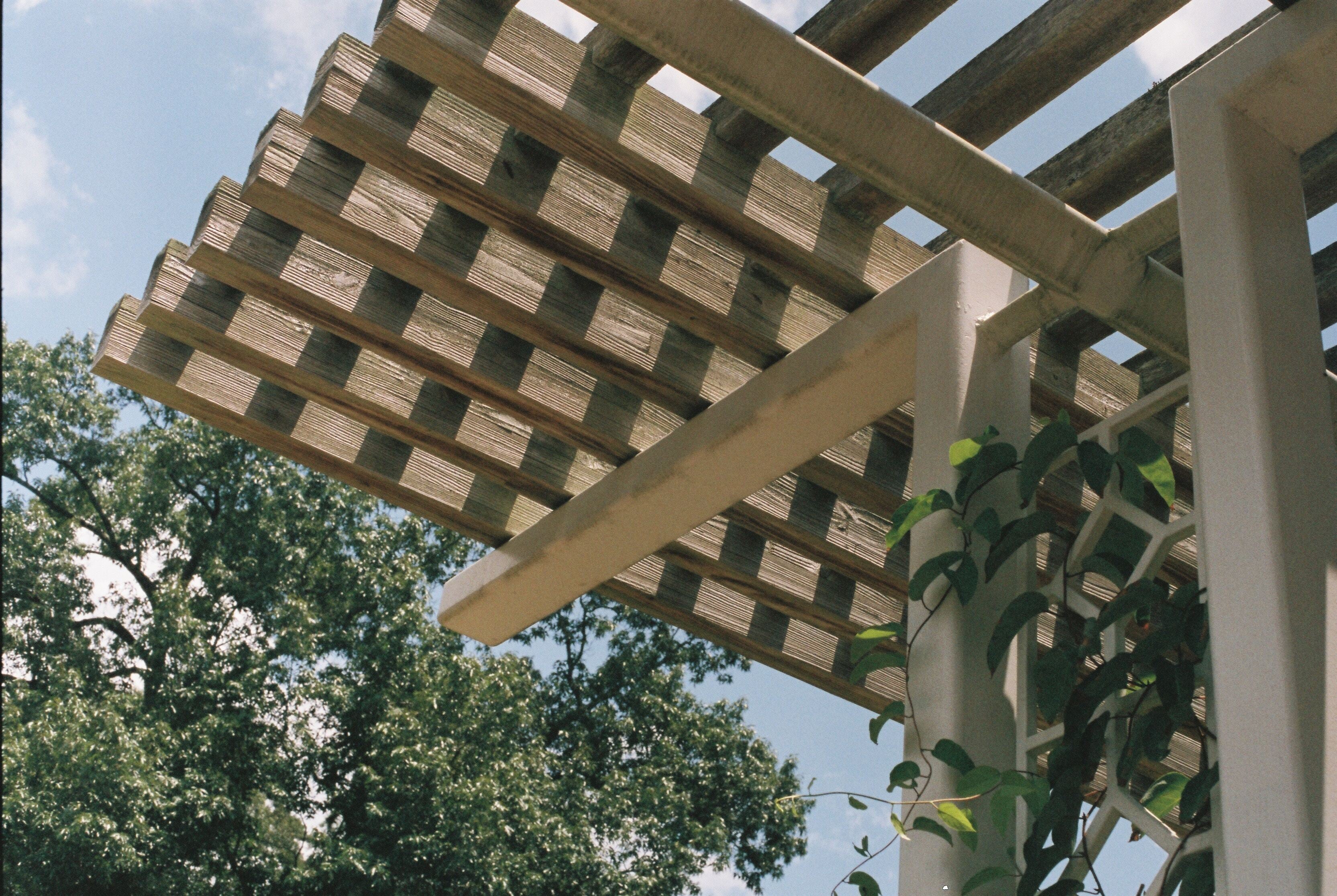
When it comes to your outdoor timber structures, protection is key. Harsh weather conditions and moisture can all take a toll on the longevity and appearance of your wooden deck, fence, or furniture. That's why we've gathered some top tips for safeguarding your outdoor timber, and we'll introduce you to some of Timbashield’s products – a reliable solution to preserve the beauty of your timber for years to come.
Read on to discover the best application methods to achieve optimal results
Wood Protector
Timabshield’s Wood Protector is a multipurpose and versatile range of premium solvent-based wood stain that has been specifically developed for use on exterior wood. Containing a unique blend of oils, resin, and waxes, the product soaks deeply into the wood, building up a protective layer from within.
To guarantee an even finish and ultimate protection, we recommend properly preparing the timber first. See the directions below:
Surface Preparation
Shake or mix well before use and frequently during application (thorough mixing is needed to ensure a consistent colour throughout the treatment). Ensure surrounding areas, including plants and lawn, are protected before application. A dust sheet will be perfect for this.
New Bare Timber: Ensure the surface is clean, dry, and free from debris or contamination.
Previously Coated Timber: Remove any old loose or peeling coatings and sand back to a clean surface, ensuring any dust is removed too. This will reduce the risk of problems such as patchiness or uneven drying. Wear a dust mask during the sanding process. Surfaces already coated with a microporous wood stain such as Timbashield Wood Protector or Timbashield Shed and Fence Protector should be allowed to naturally weather for a year and do not need the additional sanding step, they just need to be thoroughly cleaned before reapplication.
Old Timber: Wood that has decayed or is damaged should be removed and replaced. Brush with a stiff brush to remove any dirt that has become ingrained. Mould, algae, and fungi must be removed and treated with a suitable wood cleaner.
*** Please note that the due to the differences in porosity of some wooden surfaces, rough sawn, absorbent wood will have a darker finish than harder smooth wood. This is due to how much product is absorbed. A test patch is always recommended.
Application
Apply the product onto dry wood when there is no imminent rain forecast and in temperatures between 5 and 25 degrees Celsius. Failure to meet these requirements may adversely affect the drying and durability of the finish.
Ensure surrounding areas are protected during application. Shake or mix the container thoroughly before use and frequently during application.
Brush: Always use a good quality brush that is recommended for use on the surface type to be treated. Apply evenly in the direction of the wood grain, brushing out thoroughly. Allow the product to penetrate the wood and leave to dry before applying the next coat. Under normal conditions this should take 4-6 hours but will be showerproof within an hour.
Roller: A roller may be used on smooth wood, but on rough sawn timber this may result in snagging, in which instance applying with a brush is recommended.
Dip: Undertake a controlled dip of the timber to be treated into the Wood Protector stain. Allow to fully dry before using the treated surface and avoid immediate stacking of stained items until dry.
Low temperatures, increased humidity and ingredients of some wood types may increase drying time.
On items such as garden furniture, check colour fastness of the treated surface to prevent transfer to clothing and materials. Do not spill on bitumen, rubber, or bitumen roofing felt as materials may soften or swell.
Cleaning
During application, remove any excess with a clean cloth. Any spillages should be cleaned immediately, and brushes washed with white spirit. Washing with water is not suitable for a solvent-based product.
Are you looking to enhance the beauty of your wood grain, prevent water UV, and fungal damage? Take a look at our Wood Protector, available in 9 shades.
Shed & Fence Protector
Timbashield’s Shed & Fence Protector is the perfect product for large areas of rough sawn wood such as fences and sheds. This one coat system nourishes the wood with a blend of natural oils and waxes, depositing UV absorbing pigments to enhance, brighten, and leave a long-lasting finish.
The breathable stain helps to seal the wooden surface to leave a hydrophobic, breathable coating that will not crack, flake, peel, or blister.
This product is suitable for rough and smooth timber. To ensure the best results, we recommend following the steps below:
Surface Preparation
Shake / mix well before use and frequently during application (thorough mixing is needed to ensure a consistent colour throughout the treatment).
New Bare Timber: Ensure the surface is clean, dry, and free from contamination.
Previously Coated Timber: Remove any old loose or peeling coatings and sand back, ensuring any dust is removed. This will reduce the risk of problems such as patchiness or uneven drying. Wear a dust mask during sanding. Surfaces already coated with a wood stain such as Timbashield Wood Protector or Timbashield Shed and Fence Protector should be allowed to naturally weather for a year and do not need the additional sanding step and just need to be thoroughly cleaned before reapplication.
Old Timber: Wood that has decayed or is damaged should be removed and replaced. Brush with a stiff brush to remove any dirt that has become ingrained. Mould, algae, and fungi must be removed and treated with a suitable wood cleaner.
*** Please note that the due to the differences in porosity of some wooden surfaces, rough sawn, absorbent wood will have a darker finish than harder smooth wood. This is due to how much product is absorbed. A test patch is always recommended.
Application
Apply the product onto dry wood when there is no imminent rain forecast and in temperatures above 5 degrees. Do not apply in damp or humid conditions. Failure to meet these requirements may adversely affect the drying and durability of the finish.
Ensure surrounding areas are protected during application, a dust sheet is recommended.
Brush: Always use a good quality brush that is recommended for use on the surface type to be treated. Saturate the brush and apply evenly in the direction of the wood grain, brushing out thoroughly. Allow the product to penetrate the wood and leave to dry. Under normal conditions this should take 4-6 hours, but it will be shower proof within an hour. Whilst this is a one coat system, if after the wood is completely dry bare patches are observed, repeat the treatment.
Roller: A roller may be used on smooth wood, but on rough sawn timber this may result in snagging, in which instance applying with a brush is recommended.
Spray: Always refer to the sprayer user guide for full instructions before use. Stir thoroughly before pouring the contents into your chosen sprayer. Cover any nearby surfaces in case of overspray. Spray evenly in the direction of the wood grain.
Low temperatures, increased humidity and ingredients of some wood types may increase drying time.
Cleaning
During application, remove any excess with a clean cloth. Any spillages should be cleaned up immediately and brushes washed with soap and water.
Are you searching for a product that will enhance and protect your shed or fence from just one coat? Take a look at our Shed & Fence Protector, available in 6 shades.
Decking Protector
Timbashield’s Decking Protector is a high-performance, water-based decking stain that is made from a blend of waxes and natural oils to provide long-term exterior protection for softwood decking.
We strongly recommend that you properly prepare your decking before application, to ensure an even coverage and excellent performance. Discover the application process below:
Surface Preparation
Shake or mix well before use and frequently during application (thorough mixing is needed to ensure a consistent colour throughout the treatment).
New Bare Decking Boards: Ensure the surface is clean, dry and free from contamination.
Previously Coated Decking Boards: Decking Protector has been designed to be used on bare, uncoated decking boards so it can soak deeply into the wood fibres and give optimum performance. Any old, loose, or peeling coatings should be sanded back, and the quality of the sanding will influence the finished result. If previous coatings are not entirely removed the product may not be fully absorbed, potentially causing patchiness.
Surfaces already coated with Timbashield Decking Protector should be allowed to naturally weather for at least a year and do not need the additional sanding step and just need to be thoroughly cleaned before reapplication.
Old Decking Boards: Panels that have decayed or become damaged should be removed and replaced. Brush with a stiff brush to remove any dirt that has become ingrained. Mould, algae, and fungi must be removed and treated with a suitable wood cleaner.
*** Please note that the condition of the decking boards will influence the final colour and appearance. A test patch is always recommended.
Application
Only apply the product onto wood that is fully dry. Ensure the temperature is between 5 and 25 degrees Celsius and there is no imminent rain forecast. Do not apply in damp or humid conditions. Failure to meet these requirements may adversely affect the drying and durability of the finish.
Brush: Start in the furthest corner and using a good quality brush, apply along the length of the board in the direction of the grain. Brush out thoroughly and do not leave pooling or any areas flooded, or this may lead to patchiness.
Apply a second coat within 4-6 hours. The second coat may be slightly more difficult to apply due to the water repellent nature of the first coat. Brush back and forth to work the product into the coating below and allow the second coat to be deposited.
Due to the uneven surface of decking, two coats are required to ensure full coverage and optimum performance.
Allow 24 hours until walking on the surface and replacing furniture. Hard abrasion should be avoided, and heavy furniture should not be places on the decking for a week after application.
Low temperatures, increased humidity and ingredients of some wood types may increase drying time.
Cleaning
During application, remove any excess with a clean cloth. Any spillages should be cleaned up as quickly as possible.
Although a water-based product, brushes must be washed with white spirit due to the high content of hydrophobic oils and wax. Washing with water is not suitable. If wax builds up on the brush mid-application, wash with white spirit before continuing to will improve the ease of application.
Do you want to extend the lifespan of your decking and enrich the colour? Take a look at our Decking Protector, available in 3 shades.
Water Sealer
Water accelerates the rotting process within wood, causing it to swell and shrink, causing cracking and damage to the surface. Timbashield Water Sealer reduces this effect and increases the lifespan of the wood that has been treated.
To guarantee the desired results, we recommend that this product is applied on its own and should not be used as a primer or topcoat. We strongly advise not using this on a decking too, as it may make the surface slippery. Keep reading to discover the application process:
Surface Preparation
New Bare Timber: Ensure the surface is clean, dry, and free from contamination.
Previously Coated Timber: Timbashield Water Sealer has been designed to be used on bare, uncoated timber so it can soak deeply into the wood fibres and give optimum performance. Any old, loose, or peeling coatings should be sanded back, and the quality of the sanding will influence the finished result. If not totally removed only some of the water sealer may be absorbed, leading to issues such as patchiness and localised areas of water ingress.
Surfaces already coated with microporous stain should be allowed to naturally weather for at least a year and do not need the additional sanding step and just need to be thoroughly cleaned before reapplication.
Old Timber: Wood that has decayed or become damaged should be removed and replaced. Brush with a stiff brush to remove any dirt that has become ingrained. Mould, algae, and fungi must be removed and treated with a suitable wood cleaner.
*** Please note that the due to the differences in porosity of some wooden surfaces, rough sawn, absorbent wood may require a higher volume of product. This is due to how much product is absorbed. A test patch is always recommended.
Application
Apply the product onto dry wood when there is no imminent rain forecast and in temperatures above 10 degrees Celsius. Do not apply in damp or humid conditions. Failure to meet these requirements may adversely affect the drying and durability of the finish.
Ensure surrounding areas are protected during application. Shake/ mix the container thoroughly before use and frequently during application.
Brush: Always use a good quality brush that is recommended for use on the surface type to be treated. Saturate the brush and apply evenly in the direction of the wood grain, brushing out thoroughly. Allow the product to penetrate the wood and leave to dry before applying the next coat. Under normal conditions this should take 4-6 hours, but it will be shower proof within an hour.
Low temperatures, increased humidity and ingredients of some wood types may increase drying time.
Cleaning
During application, remove any excess with a clean cloth. Any spillages should be cleaned up immediately and brushes washed with soap and water.
Are you looking for an outdoor wood treatment that prevents damage caused by water? Discover our Water Sealer, available now.
Wood Preserver
Timbashield’s Wood Preserver is a ready to use water-based primer/ preservative, formulated to protect bare wood against woodworm, moulds, wood destroying and wood discolouring blue stain fungi.
This high-quality product primes and protects most types of exterior wood. This product is exclusively for priming only and should not be used as a topcoat. Discover the steps to protect your outdoor timber:
Surface Preparation
Shake / mix well before use and frequently during application. Ensure surrounding areas, including plants and lawn, are protected before application.
New Bare Timber: Ensure the surface is clean, dry, and free from contamination.
Previously Coated Timber: All coatings should be completely removed. If necessary grey or deteriorated wood should be sanded down to a clean, sound surface. Wear a dust mask during sanding. If it is not totally removed only some of the Timbashield Wood Preserver may be absorbed, leading to issues such as patchiness which in turn can lead to localised areas of decay, preventing the product from working as intended.
Old Timber: Wood that has decayed or is damaged should be removed and replaced. Brush with a stiff brush to remove any dirt that has become ingrained. Mould, algae, and fungi must be removed and treated with a suitable wood cleaner. Fill in any gaps with a suitable wood filler to make a sound surface before treatment.
*** Please note that the due to the differences in porosity of some wooden surfaces, rough sawn, absorbent wood may require a higher volume of product. This is due to how much product is absorbed. A test patch is always recommended.
Application
Apply the product onto dry wood when there is no imminent rain forecast and the temperature is between 10 and 30 degrees Celsius. Wood should be frost-free when treated. Failure to meet these requirements may adversely affect the drying and durability of the finish.
Brush/ Roller: Apply by synthetic brush or roller that is designed for water-borne products, spreading out thinly and evenly along wood texture. Allow the product to penetrate the wood and leave to dry before applying the next coat. Under normal conditions this should take 4-6 hours. Apply subsequent coats and then wait at least 24 hours until overcoating with your chosen topcoat.
Dip: Undertake a controlled dip of the timber to be treated into the Timbashield Wood Preserver. Allow to fully dry before overcoating and avoid immediate stacking of stained items until dry. Low temperatures, increased humidity and matrix characteristic may increase drying time.
Cleaning
During application, remove any excess with a clean cloth. Any spillages should be cleaned immediately. Clean tools immediately after use with warm soap water, subsequently rinse with clear water or use commercial brush cleaner.
Are you looking for a quick drying and effective primer for your outdoor timber? Take a look at Wood Preserver/ Primer, available now.
Final Thoughts
Protecting your outdoor timber is essential to ensure its durability and visual appeal. With Timbashield's range of products – Wood Protector, Shed & Fence Protector, Decking Protector, Water Sealer, and Wood Preserver – you have the tools you need for effective and long-lasting protection. Follow these top tips for application to achieve optimal results and enjoy the beauty of your outdoor timber for years to come.
Got any more questions about our products? Get in touch with our friendly team who will be able to answer any questions you may have.
*** Note: The finished surface is influenced by several factors including wood species, previous treatments that may have been used, and the condition of the wood, therefore a trial application is always required. Remember to always read and follow the instructions on the product labels for the best outcomes on your outdoor timber.
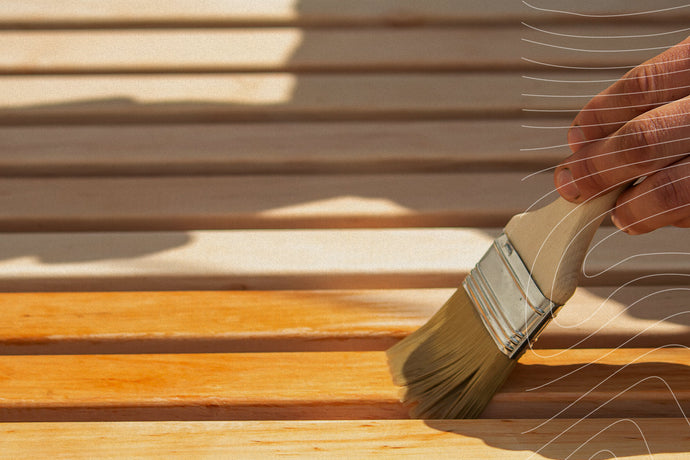
What to Do with Leftover Wood Stain: Tips for Use and Disposal
Discover smart ways to use, store, or safely dispose of leftover wood stain with our practical, eco-friendly tips.
view this post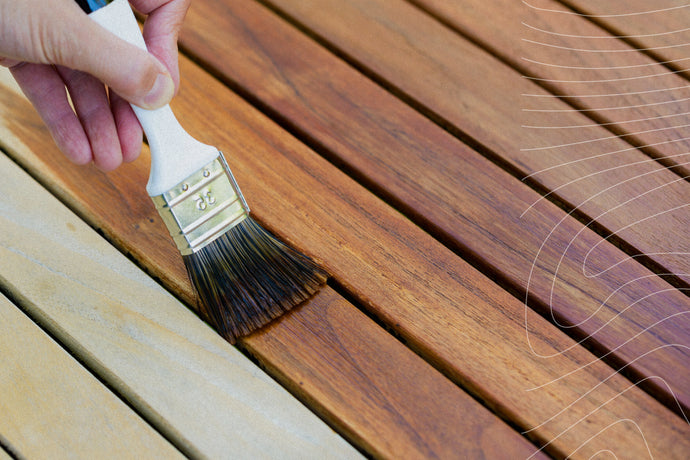
The Do’s and Don’ts of Staining Garden Furniture & Fences
Discover the essential do’s and don’ts for staining garden furniture and fences to achieve a long-lasting, professional finish.
view this post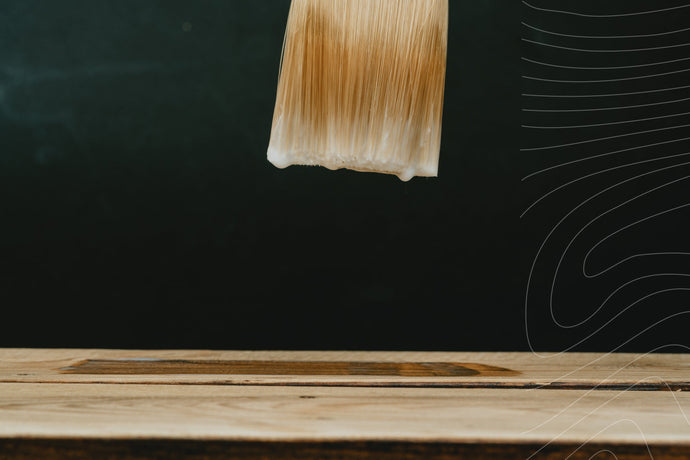
Tackling Mould & Algae: Restoring & Preserving Outdoor Wood
Restore and protect outdoor wood this spring! Learn how to tackle mould & algae and preserve wood with Timbashield’s expert tips.
view this post